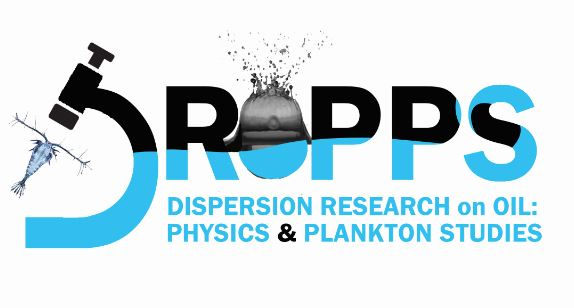By Nilde Maggie Dannreuther and Stephanie Ellis
Scientists conducted laboratory experiments to investigate if copepod behavior can reshape the size frequency distribution of oil droplets. They observed that copepods directly changed it through the combined movement of their feeding and swimming appendages and by ingesting oil droplets and discharging undigested, smaller-sized oil drops. The animals’ actions created feeding currents (high-shear environments) that affected the population of droplets, splitting droplets with a 16 μm diameter into smaller ones of 4-8 μm diameter. As copepod numbers increased, there were greater shifts from 16 μm droplets to droplets ranging 4-8 μm. The generation of smaller droplets can increase oil bioavailability to smaller organisms, which may increase transfer of oil compounds between trophic levels. The results suggest that copepods are part of biologically-driven microscale processes that can modify the fate of an oil spill.
Following Deepwater Horizon, there has been much interest in determining and predicting oil droplet size frequency distribution. The turbulent mixing environment of subsurface spills creates oil droplets, and those larger than 5 mm can reach the ocean surface within hours while smaller droplets may take more than a day. Wave turbulence can break up surface slicks into droplets with diameters of 10-100 µm, and the application of chemical dispersants can create oil droplets with diameters less than 70 μm. These size ranges are similar to phytoplankton cells, making them appear as food to planktonic organisms.
The ocean is filled with planktonic copepods, one of the Earth’s most abundant animal community. Copepods, particularly in deep waters, have a pivotal position in the food web, functioning as key intermediaries between tropic levels. Prior research suggests that copepods can uptake oil by ingestion, diffusion over the body surface, accumulating compounds in egg lipids, egesting them in fecal pellets, or metabolizing oil drops.
To learn more about how copepods interact with oil droplets, the research team incubated copepods (Paracartia grani) in a non-toxic light crude oil substitute (16 μm droplets) and filtered seawater, starting with a control solution (no copepods) and then increasing them per volume. The team considered mechanical/physical events to test whether shear fields generated by the feeding apparatus or ingestion/digestion created the results.
“We used microfluidic devices to construct oil droplets of the same diameter plus or minus one micron. In this way, we could detect immediately when something manipulated the droplets to make them smaller or bigger,” explained study author Rudi Strickler. “During incubation, we avoided the common method of shaking and filtering oil suspended in the vials, because the larger size frequency distribution would mask the influence of the animals on the distribution.”
The copepods’ manipulation of oil droplets produced droplets at a size accessible to protozoans, copepod nauplii, meroplankton larvae, and pelagic tunicates, many of which copepods feed upon. However, Strickler noted, “Even if the copepods do not ingest oil droplets, they may still manipulate larger droplets and leave behind smaller ones.” Study author Marco Uttieri continued with, “Smaller particles are more easily accessed by organisms smaller than copepods. As such, copepod manipulation can increase the transfer of oil droplets among trophic levels.”
Strickler noted that copepods’ effects on oil droplet size distribution could potentially affect human health. “Smaller droplets are more easily airborne, as shown by research from the John Katz lab at Johns Hopkins University. Suspension feeding copepods in the upper layers of water, as well as in near-shore environments, may contribute to the amount of airborne oil particles. Future research should test this notion.”



